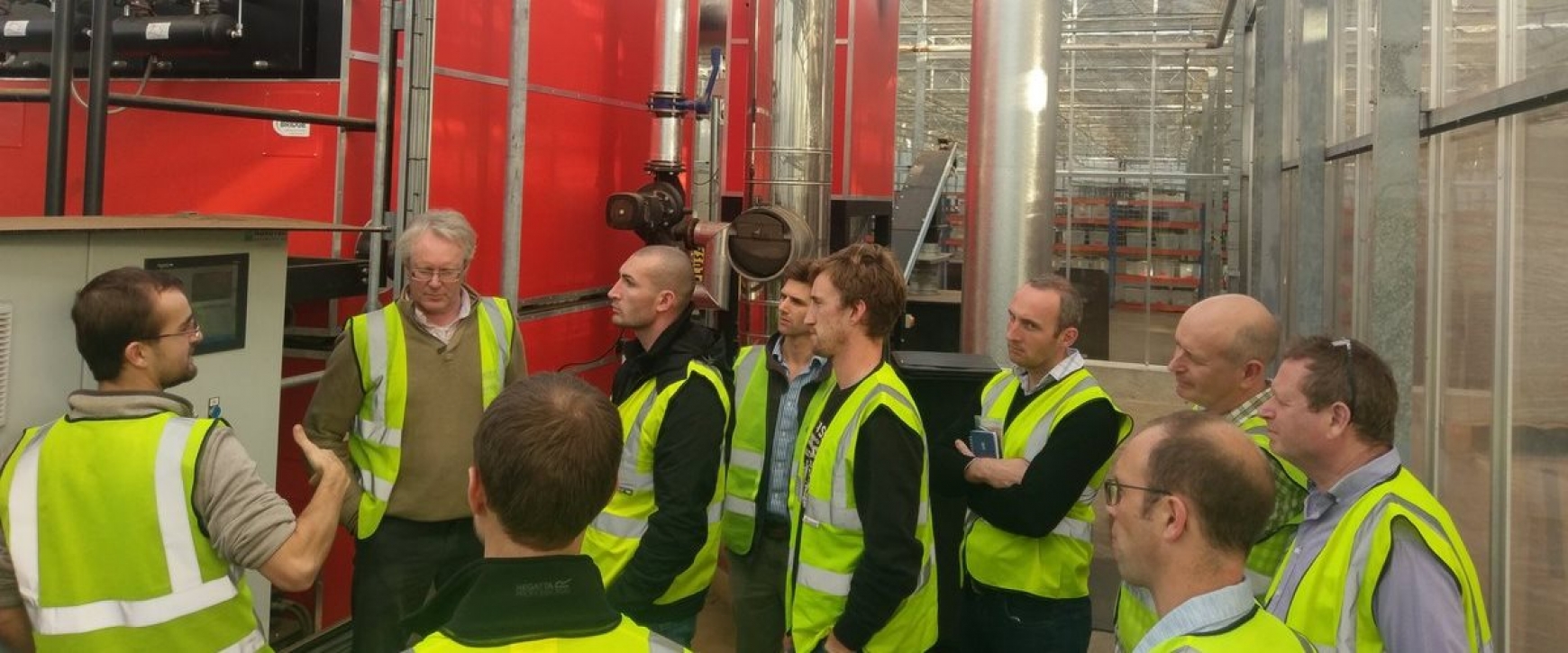The latest GrowSave* event focused on how operators of biomass boilers can ensure they are getting the most out of their equipment. Many growers and businesses have installed biomass boilers in recent years, taking advantage of the Renewable Heat Incentive (RHI) scheme. However, those who operate the heating system are not necessarily familiar with the inner-workings of a relatively complex boiler, meaning many are left to run sub-optimally and potentially without proper maintenance.
The event took place at Roundstone Nursery in Chichester on 23 November. With Jon Swain, Energy Consultant from FEC Energy, starting off by explaining the recent reforms to the RHI scheme and how this should mean new systems installed today are more appropriately sized. Jon also talked about the importance of compliance with Ofgem’s regulations, to ensure installations remain eligible for RHI. One aspect of compliance is using appropriate fuels, i.e. one that is listed on all the relevant documentation associated with the boiler, not just the one that is listed on a boiler’s emissions certificate.
During the event, Matt Baxter, Technical Director at Core Biomass, offered advice on how to ensure boilers are set up for best performance. He highlighted some of the known problems with different fuel types, driving home the fact that each type of boiler will be optimised for a certain type and quality of fuel. Burning low quality, contaminated fuel in a boiler not designed for it can easily lead to problems, increased maintenance and, unscheduled downtime.
Rob Waterhouse, who hosted the event, is responsible for Roundstone’s 1MW biomass boiler. He spoke of how quickly he had to learn over the past year, since the system became operational, as biomass was completely new to him.
Despite a few teething problems early on, Roundstone’s system now runs smoothly, as Rob ensures the woodchip supplied is suitable for both the boiler and the automated fuel delivery feed. Suitability can be viewed in terms of size, quality and, importantly, moisture content.
Ultimately, the aim of a biomass boiler is to provide heat, often to a glasshouse. How the two components integrate was covered by David Summerfield of Bridge Greenhouses. He stressed the importance of buffer tanks and heat stores, and how these should be used effectively. One of the take-home messages was that more heat storage capacity can be added if required. This is now the case at Roundstone Nursery, but space remains a challenge. Despite this, a bigger heat store would allow more efficient operation of the boiler, especially when demand is low on milder days.
GrowSave has two more events coming up soon and you can find out more about these here.
*The GrowSave Project is delivered by FEC Energy on behalf of the AHDB Horticulture— a levy-funded organisation that serves the commercial horticultural industry in England, Scotland and Wales.


